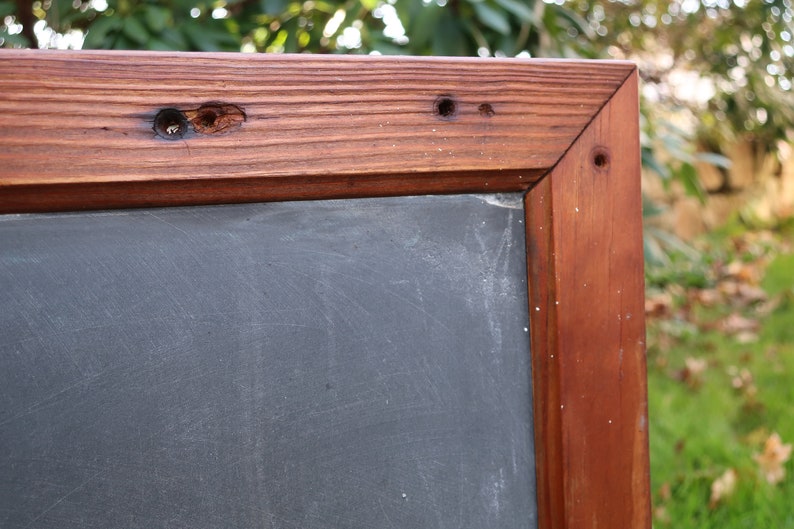
Each phase of its development was directly linked to a specific purpose-the easel style, for example. The chalkboard has come a long away from the green and black wooden schoolroom canvas. The chalkboard easel-a favorite of dining establishmentsįrom indoors to outdoors to basically everywhere Fryxell of Family Tree magazine claims that early ones were made from “pine covered with a mixture of egg white and carbon from charred potatoes.” Some classroom walls had “a paste of lime, plaster of Paris and lampblack” spread on them. The term " chalkboard" started appearing in the USA in the mid-1930s. What do eggs and potatoes have in common with the chalkboard?Īs early as 1815, Scots referred to this writing canvas as the "blackboard," because it was made of dark gray or black slate stone. Others say it was 1823, when Samuel Read Hall-who opened the first "normal school" in Concord, Vermont-patented a design for a blackboard. Some say it was in 1801, asserted by some as the date of the earliest recorded use of slates in the USA by George Baron, a West Point teacher.

REAL CHALKBOARD FLOORS TV
Before landing on the idea of one huge board, Pillans had placed all of his students’ reading tablets on the classroom wall, much like the display of flat screens we see in Best Buy’s TV department.Īlthough most of them credit Pillans with the invention of the large chalkboard, historians disagree on exactly when the slate board was first invented. His formula for colored chalk consisted of ground chalk, color dyes and porridge. He envisioned a writing board encompassing an entire wall, covering the wall with gray or black slate stone and using chalk to write on it.

James Pillans, inventor of the chalkboardĮnter James Pillans, the headmaster of Old Royal High School in Edinburgh, Scotland, the recognized inventor of the chalkboard and colored chalk. The woman responsible for opening the first school in California had to write on what was readily available: the backs of her students’ hands! She knew there had to be a better way of conveying information for the whole class to read. This is a true story of what happened in a world without readily available chalkboards: In 1846, teacher Olive Mann Isbell (niece of the famed American educator Horace Mann) was faced with the impossible task of teaching the alphabet to students who had neither slates nor paper. Have you ever wondered what students in classrooms used before there were chalkboards and paper? Cave walls and hands, perhaps? Not so long ago, they wrote on small slabs of wood covered with black grit, called ‘slates.’ These were cumbersome, however, because teachers had to go from student to student to check their work and could present their lessons to only one person at a time. The vintage-look modern slate chalkboard: works with regular chalk and liquid chalk markers Black, green or white, the traditional scribbling board has come a long way


 0 kommentar(er)
0 kommentar(er)
